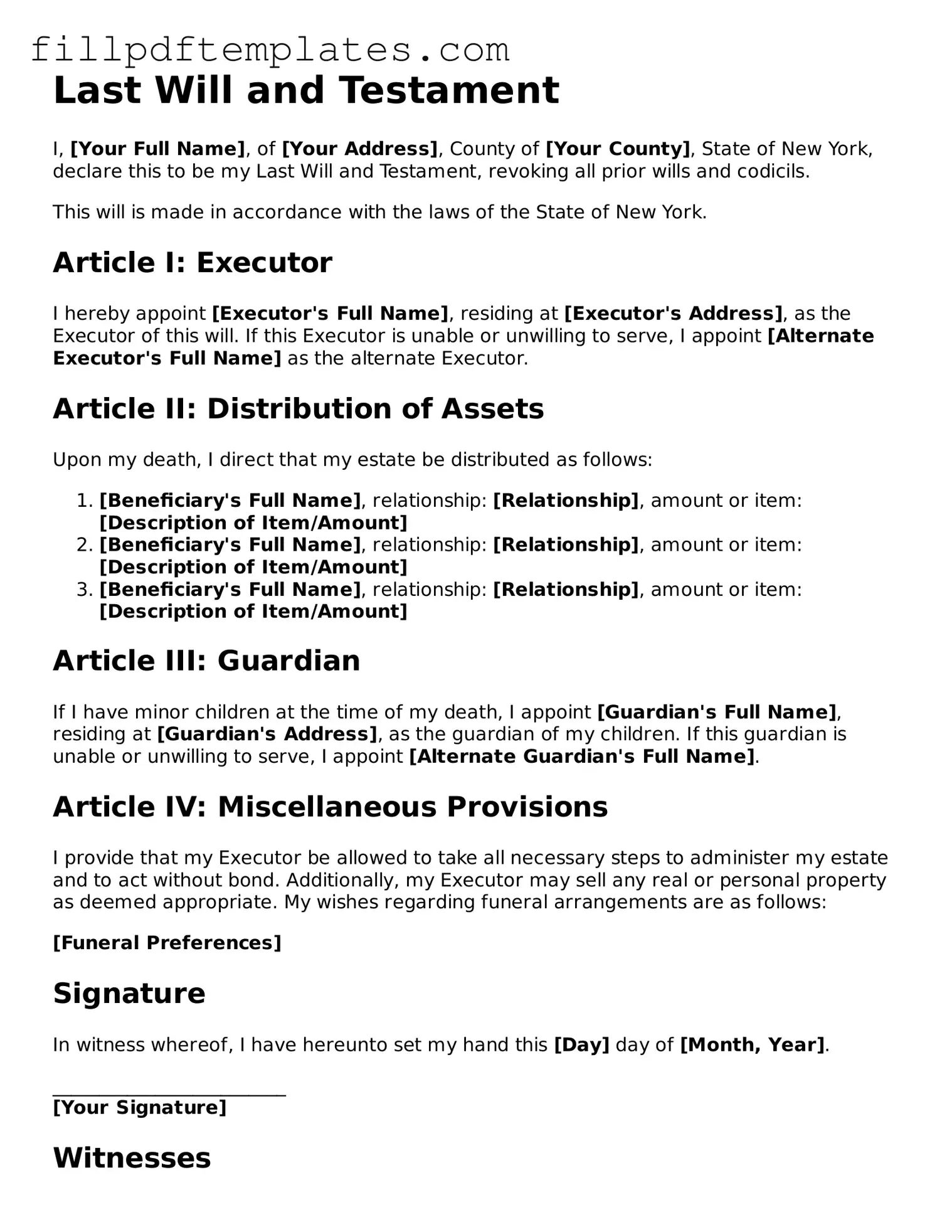Last Will and Testament
I, [Your Full Name], of [Your Address], County of [Your County], State of New York, declare this to be my Last Will and Testament, revoking all prior wills and codicils.
This will is made in accordance with the laws of the State of New York.
Article I: Executor
I hereby appoint [Executor's Full Name], residing at [Executor's Address], as the Executor of this will. If this Executor is unable or unwilling to serve, I appoint [Alternate Executor's Full Name] as the alternate Executor.
Article II: Distribution of Assets
Upon my death, I direct that my estate be distributed as follows:
- [Beneficiary's Full Name], relationship: [Relationship], amount or item: [Description of Item/Amount]
- [Beneficiary's Full Name], relationship: [Relationship], amount or item: [Description of Item/Amount]
- [Beneficiary's Full Name], relationship: [Relationship], amount or item: [Description of Item/Amount]
Article III: Guardian
If I have minor children at the time of my death, I appoint [Guardian's Full Name], residing at [Guardian's Address], as the guardian of my children. If this guardian is unable or unwilling to serve, I appoint [Alternate Guardian's Full Name].
Article IV: Miscellaneous Provisions
I provide that my Executor be allowed to take all necessary steps to administer my estate and to act without bond. Additionally, my Executor may sell any real or personal property as deemed appropriate. My wishes regarding funeral arrangements are as follows:
[Funeral Preferences]
Signature
In witness whereof, I have hereunto set my hand this [Day] day of [Month, Year].
_________________________
[Your Signature]
Witnesses
We, the undersigned witnesses, do hereby declare that [Your Full Name], the Testator, signed this Will in our presence and that we affirm that the Testator is of sound mind and memory.
1. _________________________
[Witness 1's Signature]
[Witness 1's Printed Name]
[Witness 1's Address]
2. _________________________
[Witness 2's Signature]
[Witness 2's Printed Name]
[Witness 2's Address]
